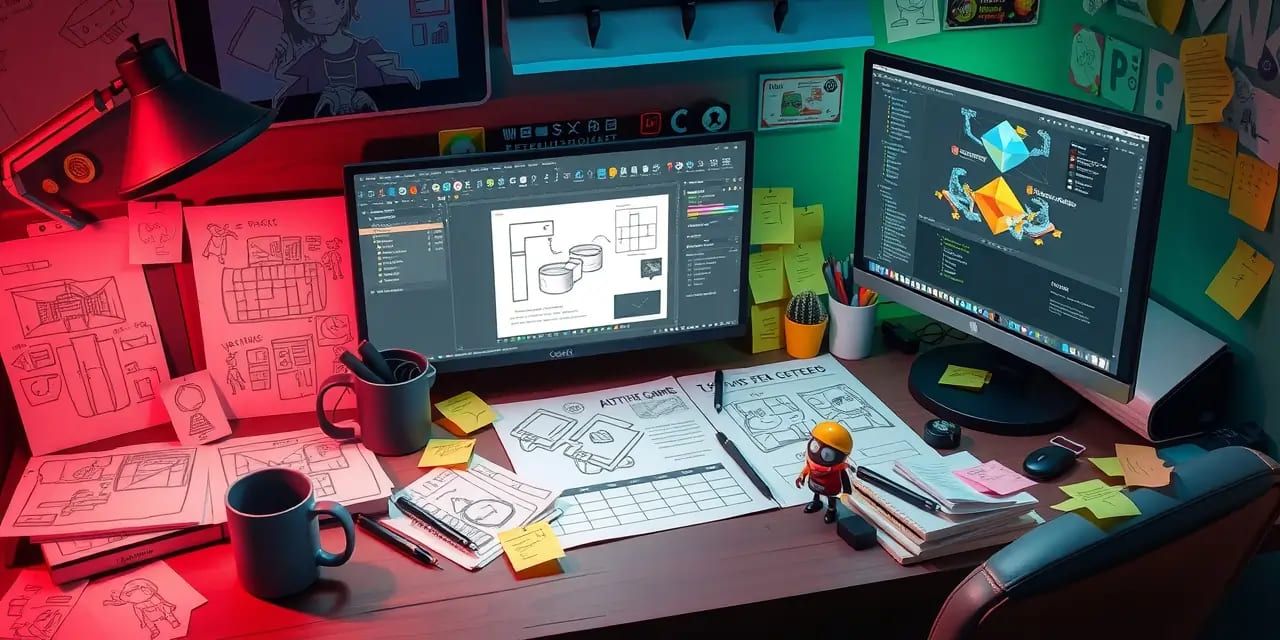
Published:
Good design isn’t just about cool art or clever mechanics. It’s about knowing what players want, how they play, and how to keep them coming back. These 10 practical rules go beyond the usual advice. They’re built for modern players, short attention spans, and global audiences. Whether you're making hyper-casual games or deep story-driven ones, these principles will help your game stick.
You don’t need a big budget. You just need design that respects how people actually play.
Your players aren’t always sitting at a desk with both hands free. Some are on a toilet, others are on a noisy bus, or killing time in line. Your game should be playable with one hand, easy to control, and still fun even when distractions are around. Tap-friendly, intuitive controls make the difference between play and uninstall.
Inside jokes or cultural references might be funny to your local friends, but they confuse everyone else. Keep humor and storytelling broad and relatable. If your joke needs explaining, it’s not going to work worldwide. Design for the planet, not just your town.
Whether it’s collecting a coin or beating a level, every action should feel good. Add some juice - sound effects, screen shakes, satisfying animations. You don’t need fireworks on every tap, but some kind of feedback keeps the game engaging. If it feels good, people keep playing.
Think in 30 to 40 second chunks. Most players don’t want to sit through long levels. Quick levels mean more wins, faster progression, and shorter loading times. Games that respect your time are games people play longer.
Make your early levels easy. Let players feel like they’re winning and improving. Gradually increase difficulty, but never make it punishing. Fun builds momentum - frustration kills it. Easy wins keep people around longer than complex puzzles.
Your interface should guide, not distract. No one wants to play through a cluttered screen. Keep it minimal, clear, and focused on the game itself. The best UI is the one players barely notice.
If someone needs to read a manual to play your game, you’ve already lost them. The first few seconds should show them what to do through gameplay alone. One clear moment is more powerful than ten lines of text.
Every player action should lead to a clear reaction. Tap and something moves. Win and something sparkles. This quick feedback is what keeps players engaged and makes gameplay feel responsive and rewarding.
You might love a mechanic, a feature, or a character, but if your players don’t care about it, move on. Data isn’t your enemy - it’s your map. Use analytics, feedback, and testing to guide what stays and what goes.
Players want to get to the fun fast. If your game takes a minute to load or forces players through too many menus before they can actually play, they’re gone. From app open to gameplay should be quick and clean.
Even if you’re building something complex or story-heavy, these principles still apply. Players everywhere want clarity, feedback, and respect for their time. Apply these 10 design habits and your game will feel better - not just for players, but for you as a developer too.
Game design is about empathy. Know what players need and give it to them - fast, fun, and friction-free.